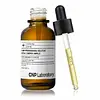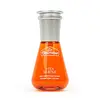What's inside
What's inside
 Key Ingredients
Key Ingredients

 Benefits
Benefits

 Concerns
Concerns

 Ingredients Side-by-side
Ingredients Side-by-side

Water
Skin ConditioningButylene Glycol
HumectantGlycerin
HumectantSodium Ascorbyl Phosphate
AntioxidantNiacinamide
SmoothingAscorbyl Glucoside
Antioxidant1,2-Hexanediol
Skin ConditioningPanthenol
Skin ConditioningImperata Cylindrica Root Extract
Skin ConditioningPolysorbate 60
EmulsifyingXanthan Gum
EmulsifyingPentylene Glycol
Skin ConditioningAllantoin
Skin ConditioningSophora Angustifolia Root Extract
Skin ConditioningSodium Hyaluronate
HumectantTrisodium EDTA
Hydroxyphenyl Propamidobenzoic Acid
Skin ConditioningBeta-Glucan
Skin ConditioningPelargonium Graveolens Flower Oil
MaskingCoptis Japonica Root Extract
Skin ConditioningCaprylyl Glycol
EmollientCarbomer
Emulsion StabilisingSodium Citrate
BufferingCitric Acid
BufferingHouttuynia Cordata Extract
Skin ConditioningFructose
HumectantUrea
BufferingSodium Hydroxide
BufferingGinkgo Biloba Nut Extract
Skin ConditioningCodonopsis Lanceolata Root Extract
Skin ConditioningFicus Carica Fruit Extract
HumectantMaltose
MaskingMelissa Officinalis Leaf Extract
Skin ConditioningPunica Granatum Fruit Extract
AntioxidantSodium Chloride
MaskingSodium Lactate
BufferingSodium PCA
HumectantTrehalose
HumectantAcrylates/C10-30 Alkyl Acrylate Crosspolymer
Emulsion StabilisingAscorbyl Palmitate
AntioxidantMadecassoside
AntioxidantGlucose
HumectantBiotin
AntiseborrhoeicLecithin
EmollientPolysorbate 20
EmulsifyingGlutathione
Disodium EDTA
Citronellol
PerfumingGeraniol
PerfumingWater, Butylene Glycol, Glycerin, Sodium Ascorbyl Phosphate, Niacinamide, Ascorbyl Glucoside, 1,2-Hexanediol, Panthenol, Imperata Cylindrica Root Extract, Polysorbate 60, Xanthan Gum, Pentylene Glycol, Allantoin, Sophora Angustifolia Root Extract, Sodium Hyaluronate, Trisodium EDTA, Hydroxyphenyl Propamidobenzoic Acid, Beta-Glucan, Pelargonium Graveolens Flower Oil, Coptis Japonica Root Extract, Caprylyl Glycol, Carbomer, Sodium Citrate, Citric Acid, Houttuynia Cordata Extract, Fructose, Urea, Sodium Hydroxide, Ginkgo Biloba Nut Extract, Codonopsis Lanceolata Root Extract, Ficus Carica Fruit Extract, Maltose, Melissa Officinalis Leaf Extract, Punica Granatum Fruit Extract, Sodium Chloride, Sodium Lactate, Sodium PCA, Trehalose, Acrylates/C10-30 Alkyl Acrylate Crosspolymer, Ascorbyl Palmitate, Madecassoside, Glucose, Biotin, Lecithin, Polysorbate 20, Glutathione, Disodium EDTA, Citronellol, Geraniol
Water
Skin ConditioningDipropylene Glycol
HumectantGlycerin
HumectantNiacinamide
Smoothing1,2-Hexanediol
Skin ConditioningPanthenol
Skin ConditioningButylene Glycol
HumectantMethyl Gluceth-20
HumectantPropanediol
SolventSerine
MaskingHydrogenated Lecithin
EmulsifyingCeramide NP
Skin ConditioningCholesterol
EmollientCaprylic/Capric Triglyceride
MaskingSqualane
EmollientGlucose
HumectantSodium Hyaluronate
HumectantCetearyl Alcohol
EmollientStearic Acid
CleansingSclerotium Gum
Emulsion StabilisingAscorbyl Glucoside
AntioxidantArachidyl Alcohol
EmollientBehenyl Alcohol
EmollientArachidyl Glucoside
EmulsifyingAcrylates/C10-30 Alkyl Acrylate Crosspolymer
Emulsion StabilisingAmmonium Acryloyldimethyltaurate/Vp Copolymer
Phytosteryl/Isostearyl/Cetyl/Stearyl/Behenyl Dimer Dilinoleate
Skin ConditioningButyrospermum Parkii Butter
Skin ConditioningCarbomer
Emulsion StabilisingXanthan Gum
EmulsifyingCinnamomum Camphora Bark Oil
MaskingLitsea Cubeba Fruit Oil
MaskingOriganum Majorana Leaf Oil
MaskingCymbopogon Martini Oil
MaskingCitrus Aurantium Dulcis Oil
MaskingCitrus Aurantium Bergamia Fruit Oil
MaskingDimethicone
EmollientCyclopentasiloxane
EmollientTriethylhexanoin
MaskingTromethamine
BufferingTrisodium EDTA
Water, Dipropylene Glycol, Glycerin, Niacinamide, 1,2-Hexanediol, Panthenol, Butylene Glycol, Methyl Gluceth-20, Propanediol, Serine, Hydrogenated Lecithin, Ceramide NP, Cholesterol, Caprylic/Capric Triglyceride, Squalane, Glucose, Sodium Hyaluronate, Cetearyl Alcohol, Stearic Acid, Sclerotium Gum, Ascorbyl Glucoside, Arachidyl Alcohol, Behenyl Alcohol, Arachidyl Glucoside, Acrylates/C10-30 Alkyl Acrylate Crosspolymer, Ammonium Acryloyldimethyltaurate/Vp Copolymer, Phytosteryl/Isostearyl/Cetyl/Stearyl/Behenyl Dimer Dilinoleate, Butyrospermum Parkii Butter, Carbomer, Xanthan Gum, Cinnamomum Camphora Bark Oil, Litsea Cubeba Fruit Oil, Origanum Majorana Leaf Oil, Cymbopogon Martini Oil, Citrus Aurantium Dulcis Oil, Citrus Aurantium Bergamia Fruit Oil, Dimethicone, Cyclopentasiloxane, Triethylhexanoin, Tromethamine, Trisodium EDTA
Ingredients Explained
These ingredients are found in both products.
Ingredients higher up in an ingredient list are typically present in a larger amount.
1,2-Hexanediol is a synthetic liquid and another multi-functional powerhouse.
It is a:
- Humectant, drawing moisture into the skin
- Emollient, helping to soften skin
- Solvent, dispersing and stabilizing formulas
- Preservative booster, enhancing the antimicrobial activity of other preservatives
Acrylates/C10-30 Alkyl Acrylate Crosspolymer is a synthetic polymer. It is used to thicken and improve the texture of products. Due to its properties, it can prevent water and oil ingredients from separating.
Ascorbyl Glucoside is a stable form of Vitamin C. It is created by combining glucose from starch.
When applied to skin, Ascorbyl Glucoside turns into Ascorbic Acid.
Ascorbyl Glucoside is an antioxidant. Antioxidants help fight free-radicals, or molecules that may damage skin cells.
It can help to reduce redness, improve skin texture, reduce the effects of aging, reduce the visibility of dark spots, and brighten skin.
Read more about other types of Vitamin C:
Learn more about Ascorbyl GlucosideButylene Glycol (or BG) is used within cosmetic products for a few different reasons:
Overall, Butylene Glycol is a safe and well-rounded ingredient that works well with other ingredients.
Though this ingredient works well with most skin types, some people with sensitive skin may experience a reaction such as allergic rashes, closed comedones, or itchiness.
Learn more about Butylene GlycolCarbomer is a polymer of acrylic acid. Its main role is to create a gel consistency.
A high amount of carbomer can cause pilling or balling up of products. Don't worry, most products contain 1% or less of carbomer.
Glucose is a simple sugar and is the most important source of energy in all organisms.
In skincare, glucose is used to hydrate the skin. It also acts as a prebiotic for our natural biome.
Glucose is hydrating due to its humectant property. As a humectant, glucose draws moisture from the air and from deeper levels in the skin.
Our skin contains many sugars that act as prebiotics and help strengthen our natural microbiome. Having a healthy microbiome helps protect our skin from harmful bacteria and other contaminants.
Studies show glucose may help with fading discoloration and pigmentation. This is because our skin metabolizes glucose into lactic acid. Lactic acid is an AHA that helps exfoliate the top layer of skin.
Learn more about GlucoseGlycerin is already naturally found in your skin. It helps moisturize and protect your skin.
A study from 2016 found glycerin to be more effective as a humectant than AHAs and hyaluronic acid.
As a humectant, it helps the skin stay hydrated by pulling moisture to your skin. The low molecular weight of glycerin allows it to pull moisture into the deeper layers of your skin.
Hydrated skin improves your skin barrier; Your skin barrier helps protect against irritants and bacteria.
Glycerin has also been found to have antimicrobial and antiviral properties. Due to these properties, glycerin is often used in wound and burn treatments.
In cosmetics, glycerin is usually derived from plants such as soybean or palm. However, it can also be sourced from animals, such as tallow or animal fat.
This ingredient is organic, colorless, odorless, and non-toxic.
Glycerin is the name for this ingredient in American English. British English uses Glycerol/Glycerine.
Learn more about GlycerinNiacinamide is a multitasking form of vitamin B3 that strengthens the skin barrier, reduces pores and dark spots, regulates oil, and improves signs of aging.
And the best part? It's gentle and well-tolerated by most skin types, including sensitive and reactive skin.
You might have heard of "niacin flush", or the reddening of skin that causes itchiness. Niacinamide has not been found to cause this.
In very rare cases, some individuals may not be able to tolerate niacinamide at all or experience an allergic reaction to it.
If you are experiencing flaking, irritation, and dryness with this ingredient, be sure to double check all your products as this ingredient can be found in all categories of skincare.
When incorporating niacinamide into your routine, look out for concentration amounts. Typically, 5% niacinamide provides benefits such as fading dark spots. However, if you have sensitive skin, it is better to begin with a smaller concentration.
When you apply niacinamide to your skin, your body converts it into nicotinamide adenine dinucleotide (NAD). NAD is an essential coenzyme that is already found in your cells as "fuel" and powers countless biological processes.
In your skin, NAD helps repair cell damage, produce new healthy cells, support collagen production, strengthen the skin barrier, and fight environmental stressors (like UV and pollution).
Our natural NAD levels start to decline with age, leading to slower skin repair, visible aging, and a weaker skin barrier. By providing your skin niacinamide, you're recharging your skin's NAD levels. This leads to stronger, healthier, and younger looking skin.
Another name for vitamin B3 is nicotinamide. This vitamin is water-soluble and our bodies don't store it. We obtain Vitamin B3 from either food or skincare. Meat, fish, wheat, yeast, and leafy greens contain vitamin B3.
The type of niacinamide used in skincare is synthetically created.
Learn more about NiacinamidePanthenol is a common ingredient that helps hydrate and soothe the skin. It is found naturally in our skin and hair.
There are two forms of panthenol: D and L.
D-panthenol is also known as dexpanthenol. Most cosmetics use dexpanthenol or a mixture of D and L-panthenol.
Panthenol is famous due to its ability to go deeper into the skin's layers. Using this ingredient has numerous pros (and no cons):
Like hyaluronic acid, panthenol is a humectant. Humectants are able to bind and hold large amounts of water to keep skin hydrated.
This ingredient works well for wound healing. It works by increasing tissue in the wound and helps close open wounds.
Once oxidized, panthenol converts to pantothenic acid. Panthothenic acid is found in all living cells.
This ingredient is also referred to as pro-vitamin B5.
Learn more about PanthenolSodium Hyaluronate is hyaluronic acid's salt form. It is commonly derived from the sodium salt of hyaluronic acid.
Like hyaluronic acid, it is great at holding water and acts as a humectant. This makes it a great skin hydrating ingredient.
Sodium Hyaluronate is naturally occurring in our bodies and is mostly found in eye fluid and joints.
These are some other common types of Hyaluronic Acid:
Learn more about Sodium HyaluronateWe don't have a description for Trisodium EDTA yet.
Water. It's the most common cosmetic ingredient of all. You'll usually see it at the top of ingredient lists, meaning that it makes up the largest part of the product.
So why is it so popular? Water most often acts as a solvent - this means that it helps dissolve other ingredients into the formulation.
You'll also recognize water as that liquid we all need to stay alive. If you see this, drink a glass of water. Stay hydrated!
Learn more about WaterXanthan gum is used as a stabilizer and thickener within cosmetic products. It helps give products a sticky, thick feeling - preventing them from being too runny.
On the technical side of things, xanthan gum is a polysaccharide - a combination consisting of multiple sugar molecules bonded together.
Xanthan gum is a pretty common and great ingredient. It is a natural, non-toxic, non-irritating ingredient that is also commonly used in food products.
Learn more about Xanthan Gum